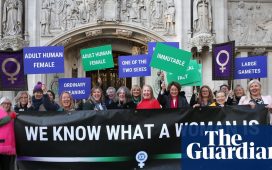In the 1980s, as sales of video recorders boomed, a trade sprang up in converting grainy old 8mm home movies of festive celebrations and first steps to VHS tapes. Later, camcorder footage of family holidays was transferred on to DVDs. Those, too, have had their day. But even those who now hold their childhood memories in digital files on their laptops know they face the risk of obsolescence. Conversion to more modern formats can prove more complicated than it looks.
Digitising archives brings huge benefits – even more so when they are public rather than private. Files can be duplicated and distributed, reducing the risk that they will be lost entirely through physical damage such as fire or flooding. Studying digital versions reduces wear and tear on the originals. Scholars from around the world can easily access records and collaborate with others elsewhere. The International Dunhuang Project, for example, has catalogued and digitised items such as manuscripts and textiles from the Mogao caves in China. Founded by the British Library almost 30 years ago, it now includes 22 institutions across 12 countries.
But the news that the Ministry of Justice is proposing to scan the 110 million wills it holds and destroy all but a handful of the originals after 25 years has appalled historians. The consultation presents this as a way of providing easier access for genealogists and other researchers. But that explains the digitisation, not the destruction of the paper copies. The ministry notes that the change would save around £4.5m a year while, it argues, retaining all the essential information.
Scholars disagree. Physical records can themselves carry important information – the kind of ink or paper used may be part of the story that historians are uncovering. Errors are often made in scanning. And digital copies are arguably more vulnerable to damage than material items, just in different ways. The cyber-attack on the British Library in October has prevented scholars from accessing digitised materials it holds: imagine if researchers could not return to the originals. Even without bad actors, digitised information can easily be lost within a few decades. Much will depend on what formats the Ministry of Justice chooses and what safeguards are put in place.
The government says that it will save the original wills of “famous people for historic record”, such as those of Charles Darwin or Diana, Princess of Wales. It is extraordinarily arrogant to assume that we know who will matter to posterity. Mary Seacole, the pioneering nurse who now appears on the national curriculum, was largely forgotten in the UK for almost a century.
Some of the most compelling historical research of recent years has focused on individuals who in their own time were footnotes at best, or overlooked entirely, and has required a painstaking search for even scraps of information. As one historian, Melanie Backe-Hansen, notes, the wills of ordinary people are arguably more valuable than those of the famous because there are so few other sources regarding them: “Wills can provide enormous amounts of information not only for family history, but for public and social history,” she adds.
The digitisation of old documents is a valuable, even essential measure. But to destroy the paper copies, once they have been scanned, is – as the historian Sir Richard Evans has warned – not a matter of efficiency, but of vandalism.











